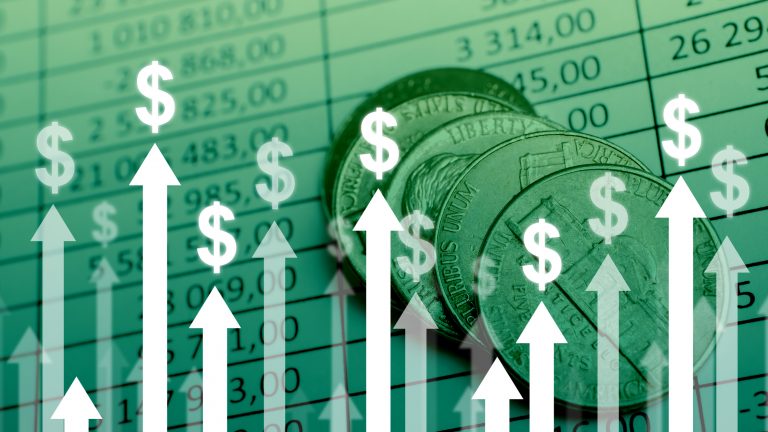
Over the past year, inflation has reached record highs. The cost for building materials, like lumber and steel, have been skyrocketing since the very beginning of the pandemic, but over the past few months, inflation has made an appreciable hit on almost every U.S. market. From groceries to gas to healthcare, prices are hitting all-time highs. As the effects of inflation become more widespread, commercial insurance will experience increased costs as well.
Causes
There is no doubt that the pandemic is one major underlying factor for current inflation rates, but experts disagree on exactly how. There are several attributing factors, however, that they can agree on:
Supply chain problems
Government and company-issued shutdowns kept factory workers and other producers’ home from work, decreasing product output in most sectors. As the disease spread and more workers were either quarantining or out sick, the slow in production changed from a divot in the road to a sinkhole.
To make matters worse, products that required shipping were stalled at understaffed ports or delayed by a lack of transportation labor. This combination created a substantial backup in the supply chain that experts hope to see improved by the end of this year.
Demand jump
Compounding the issue is something consumer experts did not expect: a dramatic jump in demand. Just when the future seemed uncertain and job security was at its lowest, people started buying. Online orders in particular hit record highs. As more money was spent on products that were being manufactured and delivered slower than ever, costs went up with those demands. Because the bump in sales occurred for products rather than services, the economy started to experience disparity, becoming less balanced.
Over-stimulated
While the difficulties above have contributed to a worldwide spike in inflation, the United States began outpacing the rest of the world in the first half of 2021 by as much as 3 percentage points. Since the start of the pandemic, two administrations have released record-breaking stimulus packages to help Americans and businesses weather the storm. New studies are beginning to show, however, that the stimulus response might have been too much help.
A report from the Federal Reserve Bank of San Francisco estimated that economic stimulus has become a contributor to inflation, especially in its latest rounds. In short, government officials overshot the amount needed to keep the U.S. afloat, resulting in the exaggerated inflation rate. One expert from the Manhattan Institute said that the American Rescue Plan, by dumping $1.9 trillion onto a $420 billion output gap, was too aggressive. The San Francisco Fed researchers agreed that the stimulus may be overheating the economy, but project that the results should be fairly short-lived.
As the effects from the stimulus packages equalize, the supply chain catches up, and people return to work, economists hope to see inflation begin to drop in late 2022 to 2023. There are still many unknowns, however, and it is unlikely that national inflation will return to pre-pandemic levels for years to come.
Inflation and Commercial Insurance
Inflation can have a significant impact on the commercial insurance market in particular. As the costs for goods and services increase, so do the costs for repairs or replacement of vital buildings and equipment. Bloated building prices, combined with unprecedented weather events, like wildfires and tornado outbreaks, have made covering property damage dramatically more costly than before. Insurers can see the cost of a repair increase quickly from the time of the original quote.
Difficulties in the supply chain have also driven up costs for cars, trucks and auto parts. The number of insurable incidents and accidents has increased at an alarming rate over the past decade. When combined with higher repair costs, those increased incidents make it difficult for insurers to secure a profit in this sector.
How to avoid surprises
Insurers will likely need to increase both premium costs and coverage restrictions to help mitigate the impact inflation has on the commercial insurance industry. There are a few things that policyholders can do to minimize complications and risks.
Clarify policy coverage
Policyholders should be proactive in understanding how they are covered and any exclusions that may apply. Now is the time to clarify what each plan covers and if the current plan adequately reflects market prices for repairs and replacements. By identifying issues within existing policies now, business leaders can avoid unfortunate surprises down the line.
It is also a good idea to begin talking about what the renewal process will look like early. This will give business owners time to prepare for policy changes that may occur as a result of inflation.
Reassess
Because the cost of building materials and construction in general is fluctuating so wildly, business leaders should regularly reassess their property’s worth to make sure it still falls within policy coverage. Failing to do this could result in the property being underinsured at the time of a loss and leave a business with crippling repair costs.
Mitigate
Now more than ever, business owners should be doing everything in their power to avoid filing a claim. Investing in training employees, posting proper signage, implementing available safety technology, and advance planning should be priorities for every business in such a precarious economy. Documentation that shows these efforts may also qualify the business for valuable discounts with their insurers.
To learn more about building a policy that fits your business, contact foyandassociates.com.
Comments are closed.


